Content
Olympia 1972
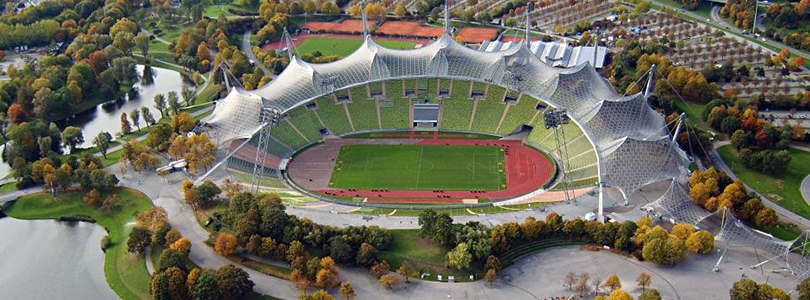
Anniversary of an icon
It is now 50 years since Munich hosted the Summer Olympics. The buildings for this major event still leave their mark on the city today. Not a few consider the Olympic site to be Germany's "most important contribution to world building culture in the second half of the century" (Süddeutsche Zeitung). Several congenial contributions turned the site of the 1972 Olympics into a unique synthesis of the arts: Frei Otto's ingenious tent roof construction over the sports facilities in the Olympic Park designed by Günther Behnisch, which Günther Grzimek designed as an open landscape park and through which Otl Aicher's pictograms led as a universally understandable guidance system.
Presenting a new, different Germany
When Munich won the bid for the 1966 Games, everyone involved agreed that the event had to be completely different in every respect to the last Olympics in Germany, the 1936 competitions in Berlin, which had been used by the Nazi regime for propagandistic self-staging. The intention now was to present a new democratic, cosmopolitan (West) Germany to the world, to host "cheerful" games full of lightness.
In this sense, it was a great moment that on October 13, 1967, the comittee decided in favor of the courageous, though not uncontroversial design of the interdisciplinary group around the architect Günther Behnisch.
Behnisch and his partners proposed an architectural and landscape planning ensemble for the competition that was unprecedented. The site at Oberwiesenfeld, which at the time consisted of a war rubble hill and a former airfield, was to be transformed into an Olympic park that, with its futuristic tent roof over the sports facilities, hilly topography, and emphatically open design, symbolized the successful dawn of a democratic society.
Pathos and monumentality, which were the defining design features back in 1936, were to be absent here; instead, "cheerful objectivity" was to prevail. It was to be a friendly "Olympia of short distances," with sports facilities and athletes' accommodations close together.
Modernity and antiquity combined
The most striking feature of the design was the transparent acrylic tent-like roof that spans the stadium, Olympic Hall and swimming hall. As a reference to the ancient origins of the Olympic Games, the sports facilities nestle amphitheater-like deep into the artificial hills; the tent roof quotes the awnings that once shielded the theaters of the Greeks.
Günter Behnisch, who would have celebrated his hundredth birthday on June 12, was an architect for whom building with lots of glass and light was a symbol of freedom and democracy. He had served as a submarine captain in World War II, which may have contributed to his later preference for airy, transparent building forms. Any symbolism of power is absent from his large buildings, which also include the New Plenary Hall in Bonn or the Buchheim Museum on Lake Starnberg.
For his vision of the tent roof, Behnisch brought the architect Frei Otto on board. Otto (1925-2015) was the pioneer of a biomorphic building form of curved, light, bright roofs. At the time, he was working on a transparent tent roof for the German pavilion at the 1967 World's Fair in Montreal that anticipated the Munich roof.
Otto's organic building
Frei Otto had already laid down some aspects of his tent roofs in a patent application from 1959 ( ![]() CH387919, "Tent construction"): "According to the invention, this tent construction is characterized by the fact that the roof skin is pulled downwards in a bag-like manner between the supporting members by means of tubular tension members which serve to drain water, are guided through the roofed space, are anchored in its floor and are subjected to tensile stress."
CH387919, "Tent construction"): "According to the invention, this tent construction is characterized by the fact that the roof skin is pulled downwards in a bag-like manner between the supporting members by means of tubular tension members which serve to drain water, are guided through the roofed space, are anchored in its floor and are subjected to tensile stress."
"Structure with a skin stretched on supports" ( ![]() DE1559274C3), another tent roof patent, was filed by Otto with the DPMA during work on the Olympic Park.
DE1559274C3), another tent roof patent, was filed by Otto with the DPMA during work on the Olympic Park.
In a later patent application ( ![]() DE2520182A1 (1,11 MB)), Otto outlined some of the design principles underlying the Olympic roof: "The task is seen in creating such a tent, light-weight sheet supporting structure or the like, which is aesthetically particularly appealing and has a particularly simple and stable structure (...) whereby parts of the support of the one sheet supporting structure should also serve to support respectively adjacent tents or sheet supporting structures. (...) The resulting shape is not only very pleasing in appearance, but also proves to be particularly strong and resistant, since the multiple saddle-shaped or anticlastic curvature provides for a special stability of the surface against attacking wind forces, snow loads or the like."
DE2520182A1 (1,11 MB)), Otto outlined some of the design principles underlying the Olympic roof: "The task is seen in creating such a tent, light-weight sheet supporting structure or the like, which is aesthetically particularly appealing and has a particularly simple and stable structure (...) whereby parts of the support of the one sheet supporting structure should also serve to support respectively adjacent tents or sheet supporting structures. (...) The resulting shape is not only very pleasing in appearance, but also proves to be particularly strong and resistant, since the multiple saddle-shaped or anticlastic curvature provides for a special stability of the surface against attacking wind forces, snow loads or the like."
Courageous decisions that still shape Munich today
Together, Behnisch, Otto, Fritz Auer, Fritz Leonhardt, Wolfhardt Andrä and Jörg Schlaich planned a tent roof construction that was completely new at the time. With the help of a pair of tights belonging to Fritz Auer's wife, they made a model that finally convinced the jury. In the run-up to the Olympics, the city of Munich and its young mayor Hans-Jochen Vogel made many groundbreaking and courageous decisions that have shaped the city to this day, especially in the transportation sector.
The venues were planned and built under great time pressure (and not a few critical observers). Looking back, Behnisch once said: "That was the art: to build something unconstrained under great constraints". It was also a lot more expensive than planned (as one might have expected?).
The enormous tent roof was a sensation not only aesthetically, but also statically. It covers 74,800 square meters and is suspended from 58 steel masts. At the time, some critics said that the fragile construction would not survive the first snowfall. Half a century later, we know that the roof is very stable. Guided tours have long been offered on it.
Frei Otto, visionary and utopian
Frei Otto, the "mastermind" of the tent roof, is today considered one of the most important and influential architects of the 20th century, not least thanks to the Olympic site. He built comparatively little (one example: the bird aviary at Munich Zoo, which comes very close to his ideals of an airy, almost invisible architecture), furnished a tour of "Pink Floyd," held patents, developed among other things his own typeface ("Warmbronn," named after his place of residence; M9280010-0001) , and in 2007 - he was considered the greatest living German architect - secured his name as a trademark (307720527/DE). Shortly before his death, he received the Pritzker Prize, the world's most important architectural award, as a "visionary and utopian."
"Democratic Green"
Under the airy tent roof, the sports facilities nestle harmoniously into the surrounding hills (even the seats in the stadium are green!), making them seem much smaller than they actually are. Games in the green - Behnisch's idea of an "Olympic landscape" was put into practice by Günther Grzimek (1915-1996).
The landscape architect opened a new era in German landscape design with his innovative design of the Olympic Park. His "utility park," this "democratic green" that people were supposed to "take posession of“ was a completely new approach at the time. Grzimek wanted "people to simply say, 'I felt fine here,'" he later explained. "We wanted to make a commodity." With its hills, valleys, small rivers and lakes, the park tied in with the landscape oft he foothills of the Alps south of the city.
However, the fact that the idyllic Olympic Park was adjoined to the north by a huge concrete mountain, the Olympic village, bothered some people. After the Games, however, the Olympic Village became a residential area that is still very popular today.
Icons of design: Otl Aicher's pictograms

M880064600601K
To make it easier for athletes from all over the world to find their way to the sports facilities, a unique guidance system was created with a color code and pictograms. The graphic designer Otto "Otl" Aicher was responsible for this color concept, the groundbreaking graphics and the overall appearance. His sign language became world-famous and has long since become part of mankind's collective visual memory.
Otl Aicher would also have turned 100 this year (on May 13), but he died in 1991 after an accident. He played a major role at the short-lived but all the more influential Ulm College of Design. His pictograms are easily recognizable and universally understood, a universal design classic that transcends language and cultural boundaries (see exemplary: M8800646-0006 or M8800646-0010).
Friendly colours
As the design commissioner for the 1972 Olympic Games, Aicher, like the architects, wanted to clearly distance himself from the aesthetics of 1936 (incidentally, he was married to Inge Scholl, the older sister of resistance fighters Hans and Sophie). His color scheme for the appearance - today we would say corporate design - of the Munich Games therefore avoided the colors favored by the Nazis: black, brown and red. Instead, he chose a light blue as the main color, complemented by silver, white, orange and light green. From the posters to the signage system to the clothing of the helpers, the color scheme was applied to all materials - friendliness and cheerfulness here as well.
As a font for all materials, Aicher sensibly chose Univers. Later he developed a font of his own, Rotis, named after the place where he lived. The official logo of the games, however, did not come from Aicher himself. In a competition, the design by Coordt von Mannstein prevailed: a ring of rays with a superimposed spiral, symbolic of a luminous, radiant Munich (trademark 1145436 DE). It is still used today by Zentralen Hochschulsport München, which has been using the Olympic sports facilities ever since.
Aicher's pictograms quickly achieved such popularity that they became the actual trademark of the 1972 Games. The official mascot, however, was - a dachshund.
First Olympic mascot: Waldi, the colourful dachshund
The idea allegedly came from NOK president and dachshund owner Willi Daume. At the time, dachshunds were also considered the typical Munich pet. Aicher's employee Elena Winschermann designed the colorful "Waldi," which picked up on all the tones of the established color scheme.
"Waldi" was produced under license and marketed on a grand scale; he was available, for example, as a stuffed animal, poster, pin and puzzle. Nevertheless, business with the mascot ultimately did not meet expectations. Incidentally, the colorful dachshund was the first ever official Olympic mascot. That's why the Comité International Olympique (IOC) still secured Waldi as a trademark decades later in 2012 (IR 1612192), , as well as one of the poster motifs (IR 1145557). The IOC also applied for international trademark protection for the 2021 Olympics logo (IR 1614895).
"Cheerful" games end in bloodbath
On August 26, 1972, the 20th Summer Olympic Games began in Munich. The "cheerful" Games ended on September 5, when Palestinian terrorists attacked the Israeli team in the Olympic Village. The hostage situation ended in a bloody slaughter at the Fürstenfeldbruck airport. Despite the murder of eleven Israeli athletes and a Bavarian policeman, the competitions resumed after a day of mourning (a highly controversial decision) and continued until September 11.
This shadow remains on the memory of the Munich Olympics to this day. But the venues nevertheless continue to breathe the spirit of lightness and serenity in which they were designed. "A perfect symbol of the new, democratic Germany" is what "Der Spiegel" called the sports venues on the occasion of Günther Behnisch's death in 2010, while "Süddeutsche" spoke of the "actual landmark of the Federal Republic." In 1997, the Olympic Stadium was listed as a historic monument.
Almost a victim of football
Munich is also proud of the fact that its Olympic site is still being used intensively today, while elsewhere the buildings constructed for major sporting events often fall into disrepair afterwards.
The Olympic Stadium has seen many a great sporting moment: (West-)Germany became football world champions here when it beat the Netherlands in 1974. The Netherlands returned the favor by winning the 1988 European Championship in the same stadium. FC Bayern experienced golden years here, but later loudly demanded a "real" football stadium. When Germany won the bid for the 2006 World Cup, a massive reconstruction of the Olympic Stadium was on the cards. Günther Behnisch, closely involved as the owner of the stadium's copyrights, even drew up a proposal for the reconstruction, the so-called consensus model. However, when more and more friends of the Olympic Stadium spoke out in favor of its preservation, he surprisingly withdrew his plans.
In the end, Munich built a new football stadium, in which the 2006 World Cup opened, while the Olympic Stadium has since hosted only a few, mostly lower-class games. However, it continues to host many other sporting events, concerts and events of all kinds. The stadium has seen a lot in half a century: at times the interior was asphalted for car racing, once refugees were accommodated in the stands and in the meantime the city had to invest a lot of money in its renovation.
Virtual Exhibition "Olympia 72 in Pictures" - Photographs from the Collections of the Bayerische Staatsbibliothek
The Bayerische Staatsbibliothek is honoring the event on the occasion of its 50th anniversary with a large ![]() photo exhibition. The range of motifs on display extends from the construction work on the Olympic site to photographs of prominent visitors. To accompany the on-site exhibition, the Bayerische Staatsbibliothek is also presenting an
photo exhibition. The range of motifs on display extends from the construction work on the Olympic site to photographs of prominent visitors. To accompany the on-site exhibition, the Bayerische Staatsbibliothek is also presenting an ![]() virtual exhibition with selected exhibits.
virtual exhibition with selected exhibits.
No Olympic encore
The arena has (so far) been denied a second career as an Olympic stadium - Munich's hopes of hosting the 2018 or 2022 Winter Olympics famously came to nothing. A claim had already been registered as a trademark by the IOC in 2008: "München 2018 - Die Spiele im Herzen" (EM 006677504), and a logo was also already protected (EM 006678403, see also IR IR 1037003).
Instead, the city is now committed to the inclusion of the ensemble in the UNESCO World Heritage Site. In a few years, that could be the case. Behnisch, Otto, Aicher and their colleagues would certainly have ben proud.
Text: Dr. Jan Björn Potthast, Pictures: Radox - Public domain via Wikimedia commons, DPMAregister, TU Darmstadt, Atelier Frei Otto Warmbronn, DEPATISnet, Michael Nagy/Landeshauptstadt München, Bulthaup, Petra Maier/DPMA
Last updated: 17 April 2025

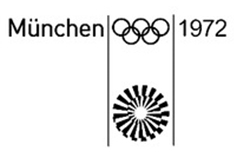
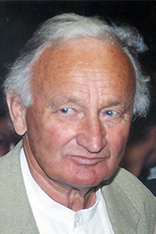



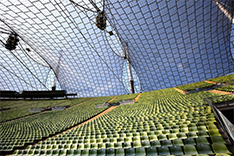

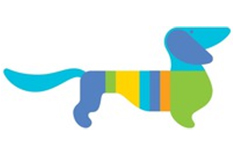
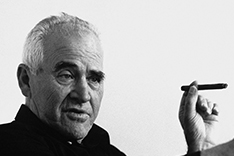

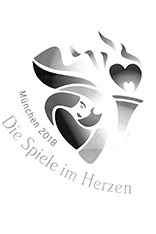
Not only protecting innovations
Social Media